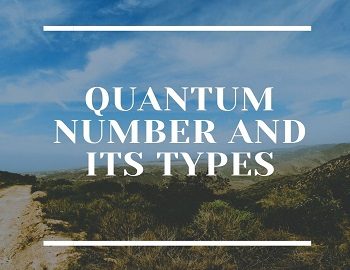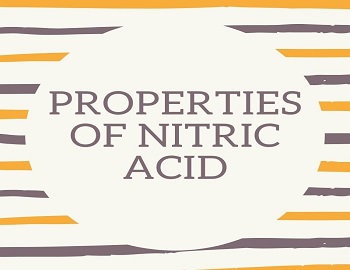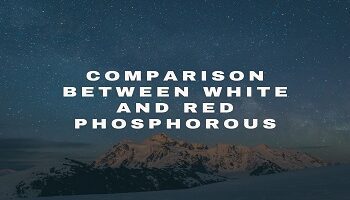Table of Contents
What is Quantum Number?
These are those numbers which give the complete address (information) of an electron in any atom. These are also called as index numbers because these indexify the whereabout of electrons. These numbers describe the position, angle and shape, orientation and spin of an electron in any atom.
Types of Quantum Number:
Principal Quantum Number or Energy Level Quantum Number or Main Quantum Number:
This quantum number was given by ‘Bohr‘ and it is represented by ‘n‘. It gives us the following information-
- It tells us about shells (orbits).
- It tells us about position of electron in any atom i.e. about energy and radius.
En = -2π2me4 / n2h2 X Z2 = -13.6ev X Z2 / n2 = -1312KJ/mole X Z2 / n2
Where, Z = atomic number; n = shell number
Rn = n2h2 / 4π2me2 X 1/Z = 0.529Å X n2/Z
Also, n ≠ 0; n = 1…………∞
Number of electrons in any shell = 2n2
If n = 1 …………electrons = 2(1)2 = 2 K Shell
If n = 2 …………electrons = 2(2)2 = 8 L Shell
If n = 3 …………electrons = 2(3)2 = 18 M Shell
If n = 4 …………electrons = 2(4)2 = 32 N Shell
If n = 5 …………electrons = 2(5)2 = 50 O Shell ……………
Azimuthal Quantum Number or Angular Quantum Number or Subsidiary Quantum Number:
This quantum number was given by ‘Sommer Field‘ and it is represented by ‘l‘. It gives us the following information-
- It tells us about sub-shells in any shell.
- It tells us about angle and shape.
Total number of sub-shells = 0 to n-1
Example-
n= 1, therefore sub-shells = 1 and it is 0.
n= 2, therefore sub-shells = 2 and it is 0, 1.
n= 3, therefore sub-shells = 3 and it is 0, 1, 2.
n= 4, therefore sub-shells = 4 and it is 0, 1, 2, 3.
n= 5, therefore sub-shells = 5 and it is 0, 1, 2, 3, 4.
Also,
if l = 0 …………….s (sub-shell)
if l = 1 …………….p (sub-shell)
if l = 2 …………….d (sub-shell)
if l = 3 …………….f (sub-shell)
if l = 4 …………….g (sub-shell)
Also, number of electrons in any sub-shell = (4l + 2) or 2(2l + 1).
Example-
l = 0 (s) electrons = 2
l = 1 (p) electrons = 6
l = 2 (d) electrons = 10
l = 3 (f) electrons = 14
l = 4 (g) electrons = 18
Magnetic Quantum Number or Orbital Quantum Number or Orientation Quantum Number:
This quantum number was given by ‘Lande‘ and it is represented by ‘m‘. It gives us the following information.
- It tells us about orbitals.
- It tells us about orientation of electron cloud under the influence of magnetic field.
Also, number of orbitals = (2l + 1) and range is -l to +l via zero.
Example-
If l = 0 (s) …………. m values = 1 and it is 0.
If l = 1 (p) …………. m values = 3 and it is -1 (px), 0 (py), +1 (pz).
If l = 2 (d) …………. m values = 5 and it is -2, -1, 0, +1, +2.
If l = 3 (f) …………. m values = 7 and it is -3, -2, -1, 0, +1, +2, +3.
Spin Quantum Number:
This quantum number was given by ‘Uhlenbeck and Gond Smith‘. It is represented by ‘s‘.
When the spectrum of hydrogen, helium, lithium and number of other elements were studied under powerful ultra spectroscope, it was observed that each further fine line is associated with two very small closely spaced lines opposite in direction called as doublets.
Thus any orbitals always contain two electrons but with opposite spin = ± 1/2.
- Dual Nature of Radiations and Matter
- Intermolecular Forces
- Carbon Cycle In Nature
- Nitrogen Cycle In Nature
- Oxygen Cycle In Nature
- Chemical Thermodynamics– NIOS









Comments (No)